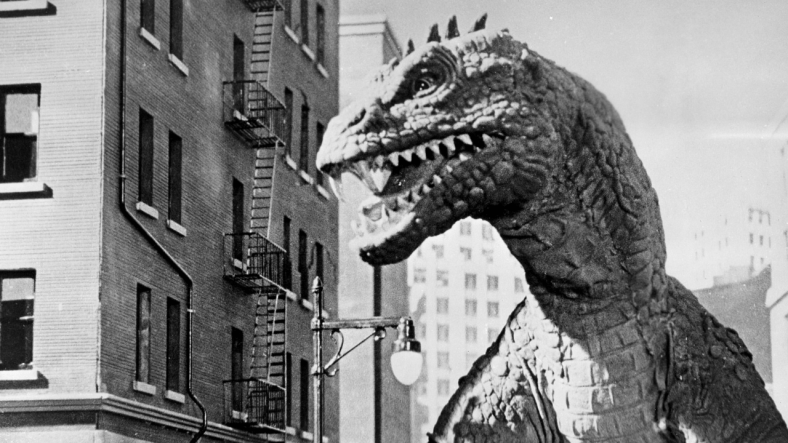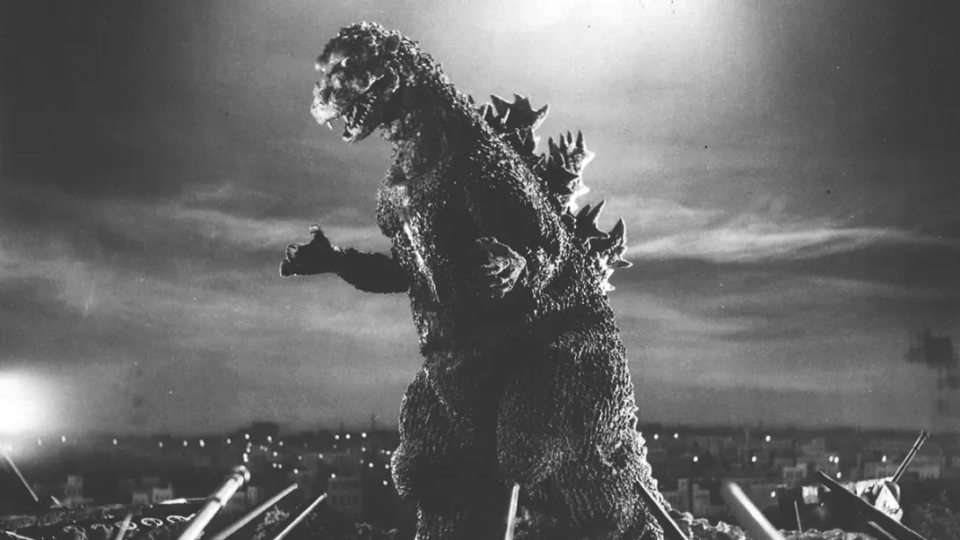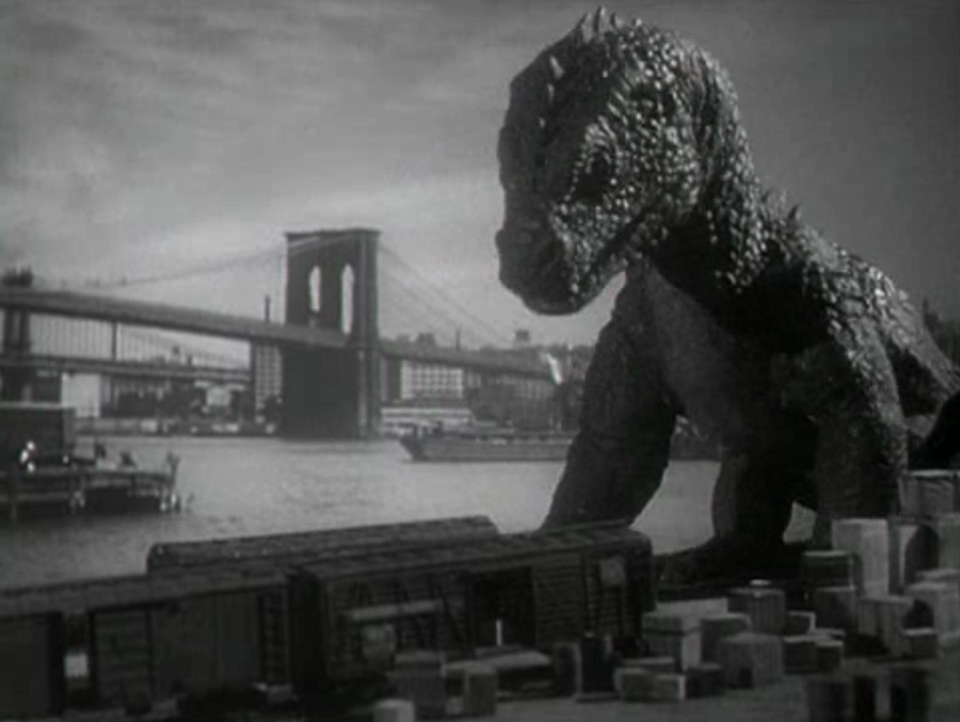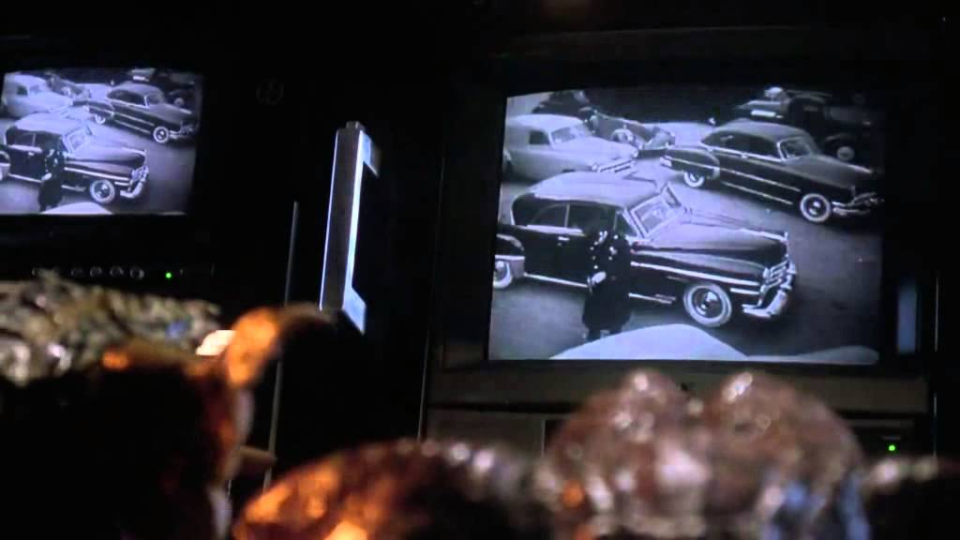The Monstrous Legacy of The Beast from 20,000 Fathoms

70 years ago, an atomic explosion shook the Arctic Circle. As the atom split, the prehistoric Rhedosaurus emerged from its icy tomb to pulverize New York city. Of course, this is 1953’s The Beast from 20,000 Fathoms, a landmark science fiction picture with a lasting impact on cinema and wider pop culture.
Of its many cultural imprints, The Beast from 20,000 Fathoms consolidated the giant monster image and kicked off a cycle of atomic creature features in the 1950s. Its visuals have been similarly recycled by generations of filmmakers from Steven Spielberg to Joe Dante. It also galvanized the career of stop-motion animator Ray Harryhausen, paving the way for equally influential genre classics. For its 70th anniversary, let’s look back at The Beast from 20,000 Fathoms.
The Beast from 20,000 Fathoms, like all giant monster films, owes much to the immortal King Kong (1933). In 1952, RKO re-released Kong to phenomenal success, and a trio of independent producers took notice. Jack Dietz, Hal E. Chester, and Bernie Burton (of Mutual Films of California) added a film to their slate called “The Monster from Beneath the Sea”. They then reached out to art director Eugene Lourie, who had previously done production design for filmmakers such as Jean Renoir. Lourie was intrigued by the “Monster” idea, which was little more than an outline at that stage, and offered to direct it as well.
Also Read: Previously, On ‘Insidious’…: Everything You Need To Know Before You Watch ‘Insidious: The Red Door’
The Beast from 20,000 Fathoms was partly inspired by Ray Bradbury’s The Foghorn, a short story in which a lonely dinosaur is drawn to a lighthouse foghorn, believing it to be the cry of its own kind. Although the film is far more expansive, it still features a scene in which the Rhedosaurus emerges from the sea to demolish a lighthouse. The scene, and indeed all the Rhedosaurus sequences, were created by Ray Harryhausen, working his first solo stop-motion animation job after collaborating with his mentor, Willis O’Brien, on films like Mighty Joe Young (1949). For the pivotal lighthouse sequence, Harryhausen chose a night-time setting for dramatic effect—and to hide any possible imperfections. This was, of course, a low-budget production, costing just over $200,000. Nevertheless, Harryhausen’s animation ingenuity gifts the film with several astonishing sequences befitting a bigger production.
Indeed, the Rhedosaurus’ New York rampage is a standout sequence of science fiction cinema. Of course, the image of a dinosaur running loose in a modern city is traceable to 1925’s The Lost World and finds obvious kinship with King Kong. But the images in The Beast from 20,000 Fathoms are polished and slick in a manner that set a new standard for American giant monster pictures. And in the same way that The Lost World and King Kong paved the way for The Beast, so too did The Beast leave its mark.
Also Read: The 4 Gayest Godzilla Movies
The film’s connection to Toho’s Godzilla (1954) is noteworthy. Producer Tomoyuki Tanaka would almost certainly have been aware of The Beast as an industry insider at one of Japan’s major studios. Indeed, the title of an early story proposal was The Giant Monster from 20,000 Miles Under the Sea. That said, The Beast from 20,000 Fathoms was released in Japan shortly after Godzilla, and the delivery, content, and tone of each film couldn’t be further apart, despite surface-level similarities involving dinosaurs revived by nuclear weapons.
After all, to deal with Godzilla, the characters in the film must turn to a weapon (the Oxygen Destroyer) even deadlier than the hydrogen bomb, implicating the endless spiral of the nuclear arms race. The Beast from 20,000 Fathoms, meanwhile, ends with a radioactive isotope fired into the Rhedosaurus’ neck—nuclear crisis solved by nuclear solution. One film is frightened for the future, the other is ultimately reassured, naturally inviting a salient comparison of the Japanese and American experience of atomic weapons.

Nevertheless, The Beast from 20,000 Fathoms remains connected to both Godzilla and the original King Kong for another reason: Terry Turner. A master promoter, Turner worked on the advertising campaigns for all three films in the US, specifically the 1952 reissue of Kong and the 1956 localization of Godzilla. His skill at delivering exploitation marketing via radio and (importantly) television, as well as saturation theatre bookings, ensured that each film was a financial success.
Also Read: Purple Rage: The 10 Most Disturbing McDonald’s Grimace Shake TikToks [Video]
The Beast from 20,000 Fathoms earned millions, far more than the comparatively measly $400,000 for which Warner Bros. bought it from Jack Dietz. The film’s success encouraged Warner Bros. to pursue another atomic monster movie, and Them! was produced in-house for a 1954 release. In turn, Them! initiated a giant bug craze in the 1950s and is set for a remake in the near future.

For Harryhausen, The Beast from 20,000 Fathoms led to a meeting with producer Charles H. Schneer, the man with whom he’d create his most enduring works, from black-and-white classics like 20 Million Miles to Earth (1957) to the mythological marvels of Jason and the Argonauts (1963). Many of the Rhedosaurus’ character flourishes can be seen time and again in Harryhausen’s other creatures, like the dragon in The 7th Voyage of Sinbad (1958) or the eponymous menace of The Valley of Gwangi (1969).
Producers Jack Dietz and Hal E. Chester would similarly work on other notable genre films in the 1950s. Dietz would produce The Black Scorpion (1957), featuring marvelous stop-motion effects from Pete Peterson and Willis O’Brien, as well as wonderful puppets by Wah Ming Chang. Chester, meanwhile, would produce the horror masterpiece Night of the Demon (1957).
Also Read: James Whale: Father of Fear
Finally, director Eugene Lourie would twice return to dinosaurs for Behemoth, the Sea Monster (1959) and Gorgo (1961). Both films repeat and expand on The Beast from 20,000 Fathoms in a variety of ways, be it the radioactive horrors of Behemoth or the softer ending of Gorgo, which sees the titular monster (and its mother) escape unharmed, quite unlike the poor old Rhedosaurus.

The Beast from 20,000 Fathoms has also been replicated and recycled elsewhere. In Joe Dante’s spectacular Gremlins 2: The New Batch (1990), the gremlins watch The Beast on television, cackling with glee as the Rhedosaurus swallows a policeman. A very similar moment occurs in Jurassic Park (1993) when the T-rex scarfs down Martin Ferrero. Moreover, frames from The Beast from 20,000 Fathoms (along with King Kong and Them!) are peppered throughout the found-footage thrills of Cloverfield (2008), which also sees a giant monster ravaging New York.
70 years on, The Beast from 20,000 Fathoms continues to inspire imitators and admirers. The film remains a foundational text of giant monster cinema, going from relatively small beginnings as a low-budget production to a smash-hit success. At its core, The Beast from 20,000 Fathoms harkens back to the loneliness of its source material, Bradbury’s The Foghorn. The Rhedosaurus, like Kong and Godzilla, is a tragic figure lost in a world he doesn’t understand. And beyond all the production facts, trivia, and pop cultural threads, that’s what keeps the film’s heart beating all these years later—no matter how extinct it may seem.
Categorized:Editorials

